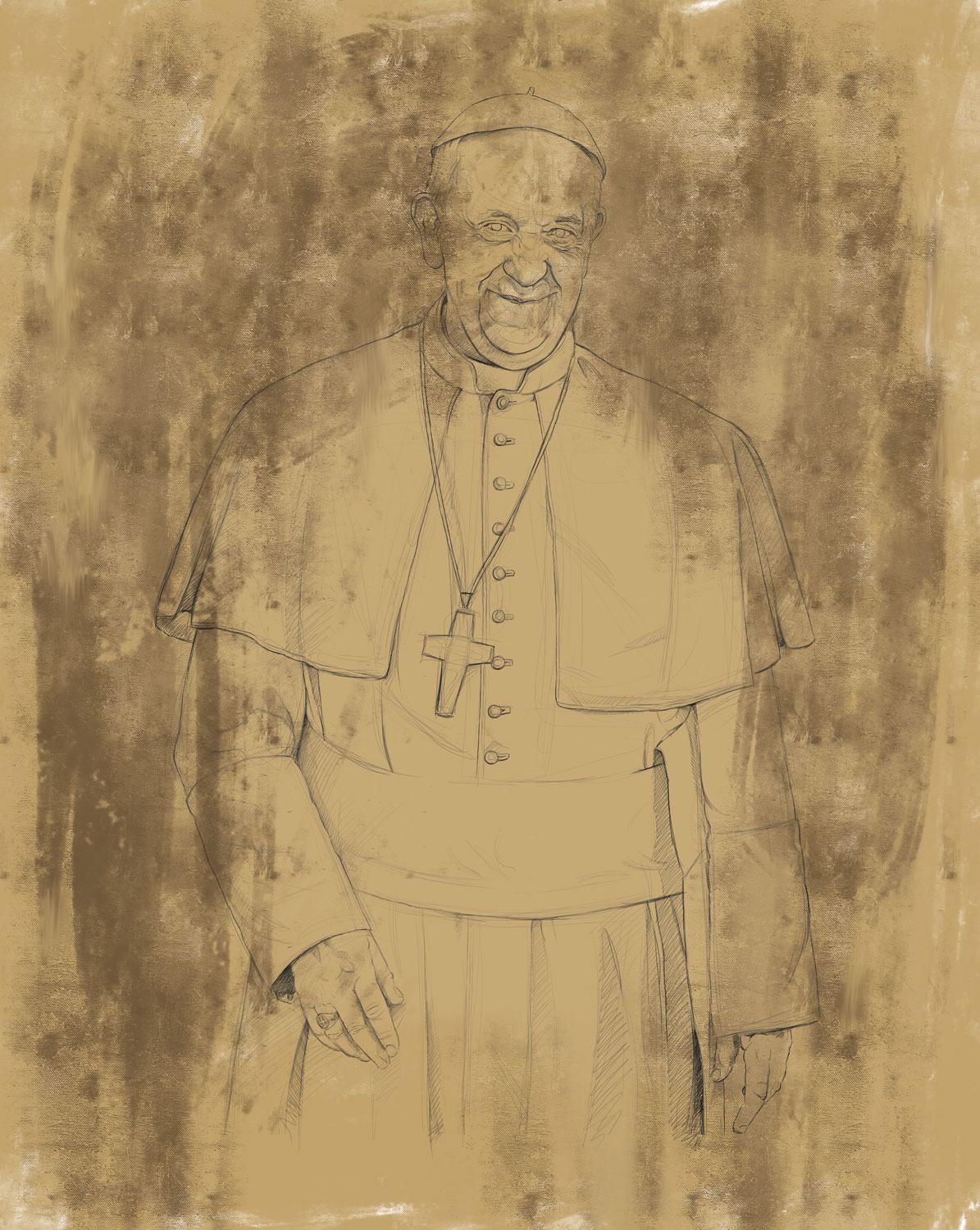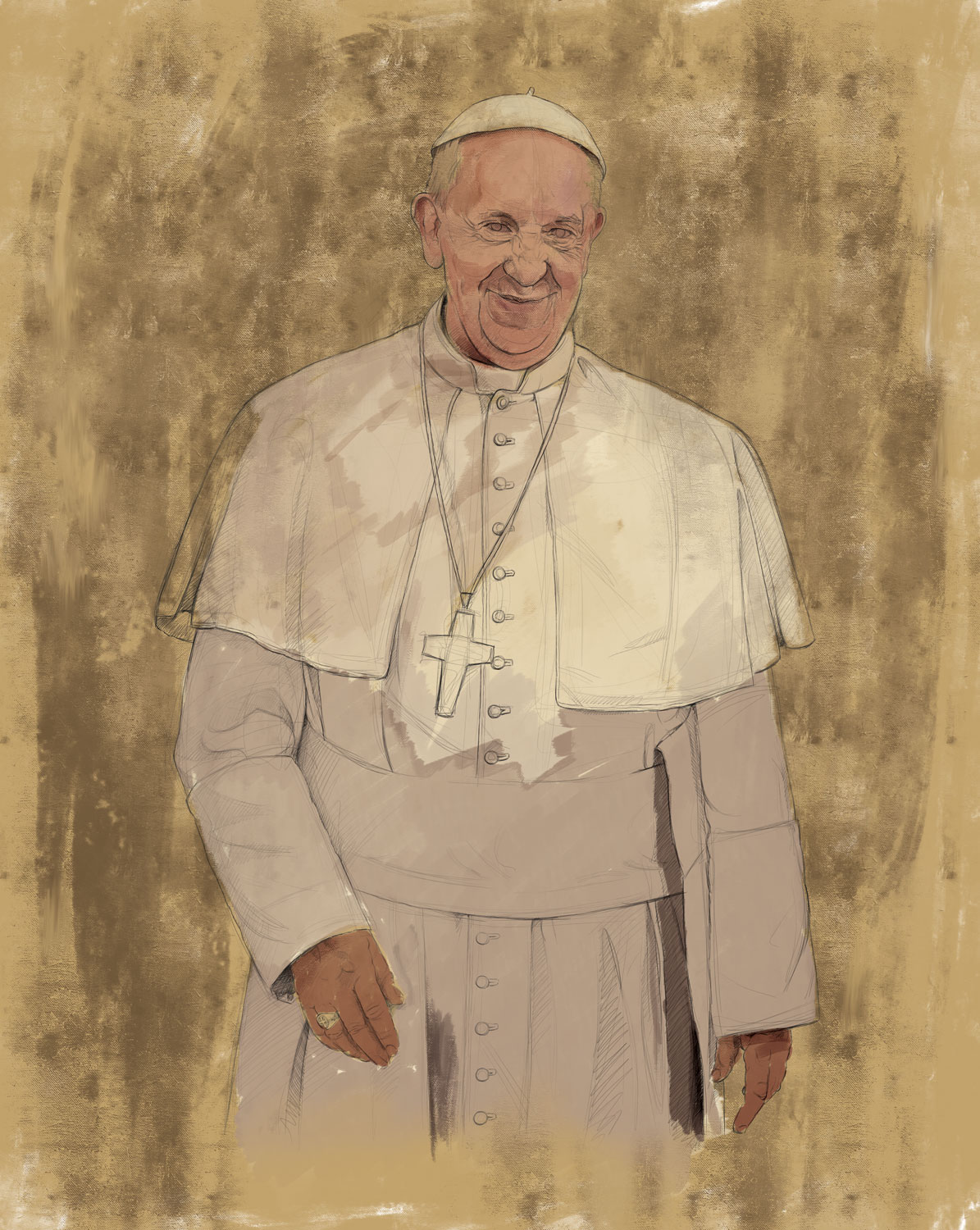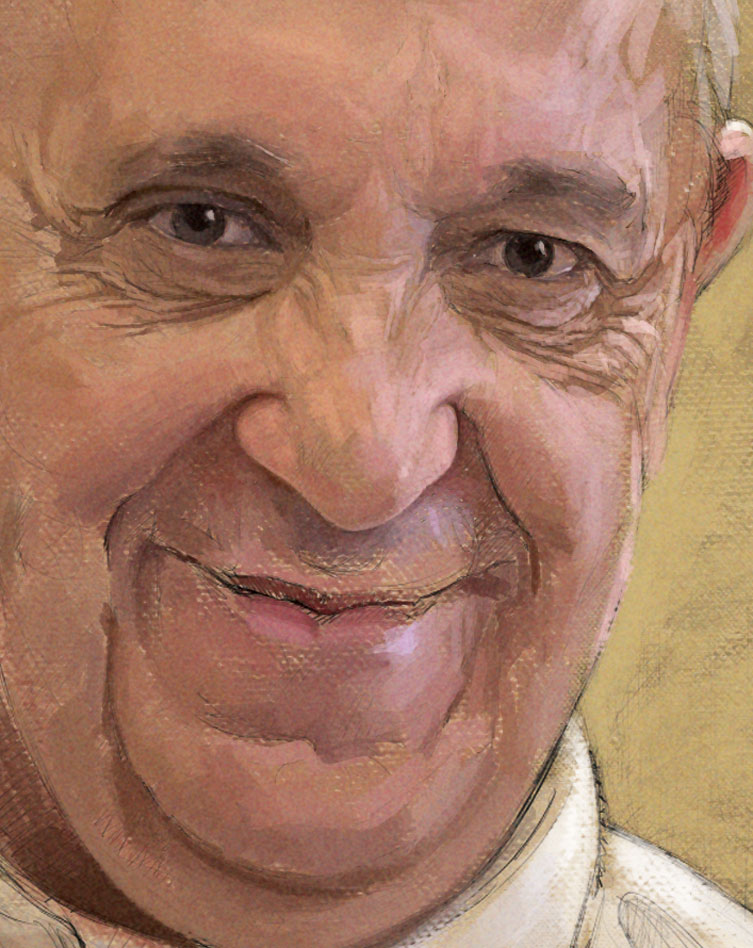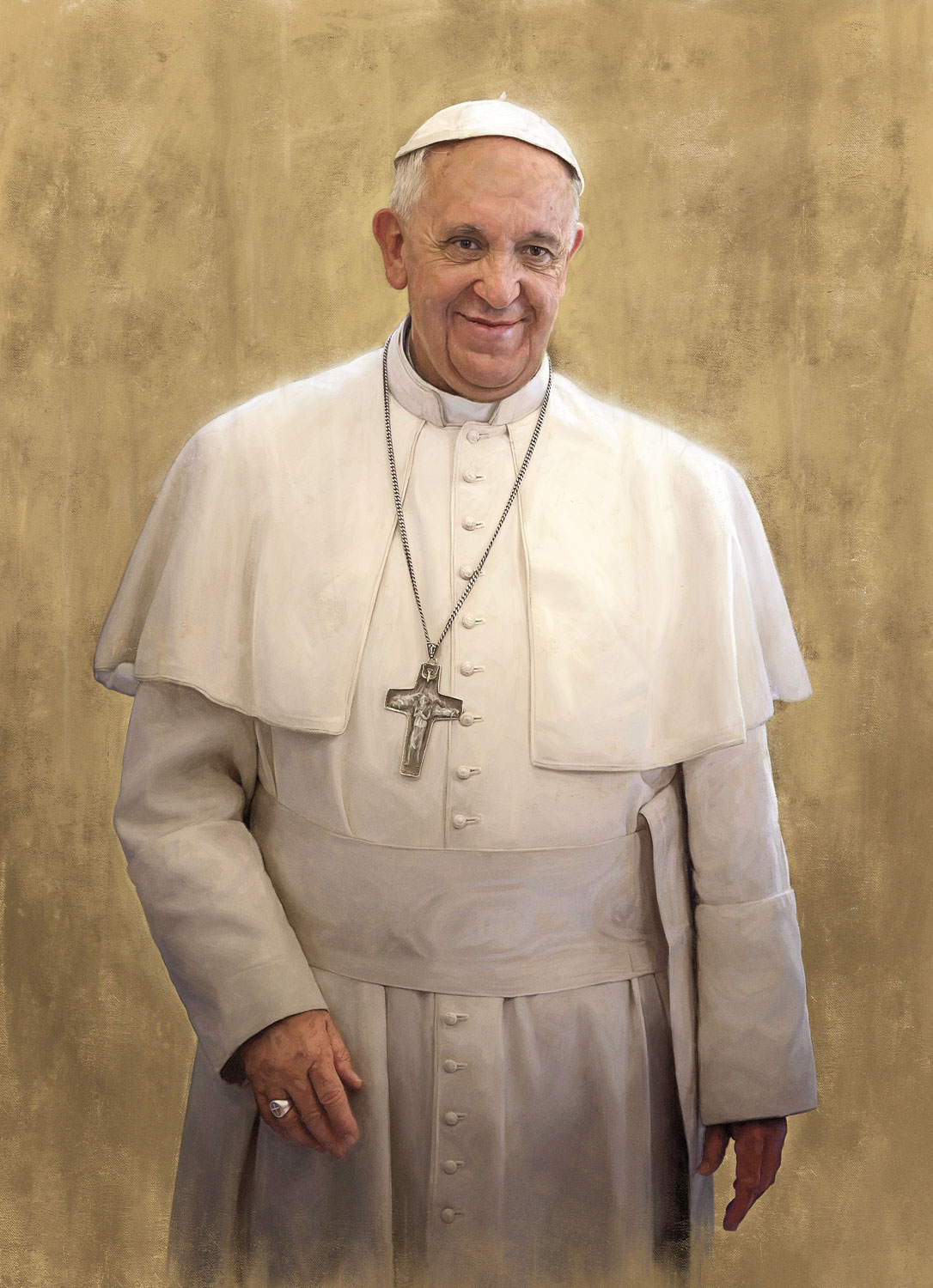To capture the essence of Pope Francis, we turned to Chicago-based artist Jason Seiler, a classically trained oil painter who recently taught himself to paint digitally on a 21-inch LCD display.
“This technology allows me to work naturally, intuitively drawing and painting directly on the LCD display,” says Seiler, who studied fine art illustration at the American Academy of Art in Chicago. “My technique when painting digitally is very similar to the way I paint with oils or acrylics. I tend to work from dark to light, focusing mainly on values and color harmony. I never use any form of photo manipulation.”
Seiler spent more than 70 hours creating the Person of the Year artwork, which continues the rich tradition of great portraiture on the cover of TIME. “A lot of times before I start a painting, I see it finished in my head,” he says. “With the Pope, I let it happen organically.”

After an initial sketch, Seiler covered it with a thin layer of raw umber—the same way an under-painting is utilized in traditional painting. “My paintings tend to have a lot of detail, but don’t let that fool you—the details are only the final touches,” says Seiler. “The most important thing is the drawing, and once I have that to my satisfaction I focus on capturing light and establishing strong values. I create a limited palette and use only those colors for the duration of the painting.”
(PERSON OF THE YEAR: Pope Francis, The People’s Pope)

Next, Seiler focused on getting the character, look and feel of the Pope correct. “From there I just painted what I was feeling. I paint by stacking and layering my brushwork similar to sculpting with clay, but building form with values, structure and most importantly capturing light.”

“Many artists can draw a decent likeness of a well-known face, but the challenge is to capture not just the likeness but the character of the person. Capturing this truth, or essence, is, for me, the most important factor in considering a portrait successful or not.”

Seiler, who also worked as a character designer on Tim Burton’s Alice In Wonderland, found painting digitally came naturally. “Mixing color digitally is done basically the same way it is done traditionally, only easier and quicker. I enjoy finding a thumbprint on a painting or seeing loose hairs from a paintbrush entombed forever in the art. I purposely leave brush marks visible, knowing that as long as the lighting and
values are correct, the painting will still have a very realistic look and quality alongside its traditional feel.”
And if you look closely at his latest work on this week’s TIME cover, you’ll notice some of those realistic touches.

